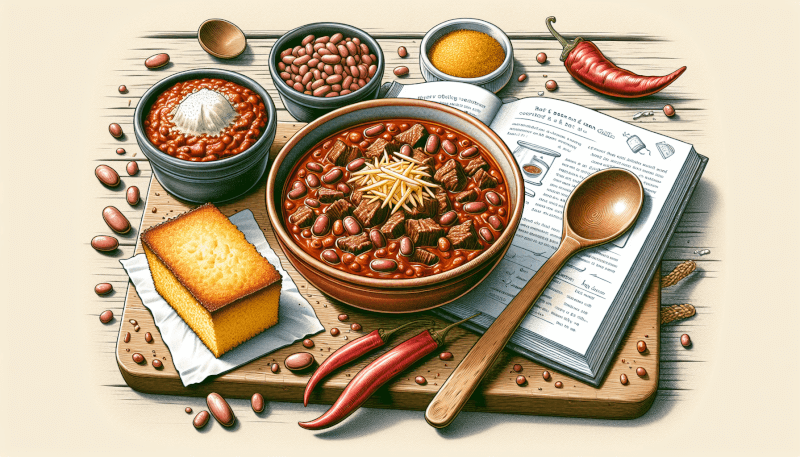Imagine coming home after a long day and being greeted by the comforting aroma of a piping hot bowl of classic beef and bean chili, served alongside a slice of buttery cornbread. The combination of tender beef, hearty beans, and flavorful spices simmered to perfection is enough to make anyone’s mouth water. In this article, we will explore the top ways to create this beloved dish, ensuring that your dinner table is filled with warmth and deliciousness. So grab your apron and get ready to embark on a culinary adventure that will leave you craving more.

Preparing the Beef and Bean Chili
Gathering the Ingredients
To start making the classic beef and bean chili, gather all the necessary ingredients. You will need ground beef, onions, garlic, bell peppers, tomatoes, tomato paste, chili powder, cumin, oregano, salt, pepper, and kidney beans. Having everything ready and within reach will help streamline the cooking process and ensure you don’t miss any key components.
Cooking the Ground Beef
The first step in making the chili is cooking the ground beef. In a large pot or Dutch oven, heat some oil over medium heat. Add the ground beef and cook until it is browned and no longer pink. Make sure to break it up into small crumbles as it cooks. This will ensure that the beef is evenly cooked and blends well with the other ingredients in the chili.
Adding the Vegetables
Once the ground beef is cooked, it’s time to add the vegetables to the pot. Add the chopped onions, minced garlic, and diced bell peppers. These aromatic vegetables will add depth of flavor to the chili. Sauté them until they are softened and fragrant, which usually takes about 5 minutes. Stir them occasionally to prevent burning.
Seasoning the Chili
After the vegetables have softened, it’s time to add the seasonings to the chili. Sprinkle in the chili powder, cumin, oregano, salt, and pepper. These spices are what give the chili its distinct and delicious flavor. Adjust the amount of chili powder according to your desired level of spiciness. Stir everything together to evenly distribute the seasonings throughout the chili.
Adding the Beans
Now that the chili is seasoned, it’s time to add the beans. Drain and rinse a can of kidney beans and add them to the pot. The beans not only add nutritional value but also contribute to the heartiness of the chili. Stir them in gently to avoid smashing the beans. At this point, you can also add any other type of beans you prefer, such as black beans or pinto beans, to add variety to your chili.
Simmering the Chili
Once all the ingredients are in the pot, it’s time to let the chili simmer. Reduce the heat to low and cover the pot. Allow the chili to simmer for at least 30 minutes, but it’s even better if you can let it simmer for an hour or two. Simmering allows the flavors to meld together and develop richness. Stir occasionally to prevent the chili from sticking to the bottom of the pot. The longer it simmers, the better the flavors will be.
Making the Cornbread
Getting the Cornbread Ingredients
To accompany your flavorful beef and bean chili, it’s time to make some delicious cornbread. Gather all the necessary ingredients for the cornbread. You will need cornmeal, flour, baking powder, sugar, salt, milk, eggs, and melted butter. Make sure everything is measured out and ready to go for a smooth and hassle-free baking process.
Mixing the Dry Ingredients
In a large mixing bowl, combine the cornmeal, flour, baking powder, sugar, and salt. Whisk them together until they are well blended. This step ensures that all the dry ingredients are evenly distributed throughout the cornbread batter, resulting in a consistent and delicious final product.
Preparing the Wet Ingredients
In a separate bowl, whisk together the milk, eggs, and melted butter. This mixture brings moisture and richness to the cornbread. Make sure the melted butter has slightly cooled before adding it to the other wet ingredients to avoid scrambling the eggs.
Combining the Batter
Now it’s time to bring the dry and wet ingredients together. Slowly pour the wet ingredients into the bowl with the dry ingredients. Stir gently with a wooden spoon or rubber spatula until just combined. Be careful not to overmix, as this can result in a tough and dense cornbread. A few lumps in the batter are completely fine and will not affect the final texture.
Baking the Cornbread
Preheat your oven to the specified temperature for the cornbread recipe. Lightly grease a baking dish or cast-iron skillet with butter or cooking spray. Pour the cornbread batter into the prepared dish or skillet, spreading it evenly. Place it in the preheated oven and bake according to the recipe’s instructions. Keep an eye on it toward the end of the baking time to ensure it doesn’t overcook or burn. Once it’s golden brown and a toothpick inserted into the center comes out clean, it’s ready to be enjoyed alongside your beef and bean chili.
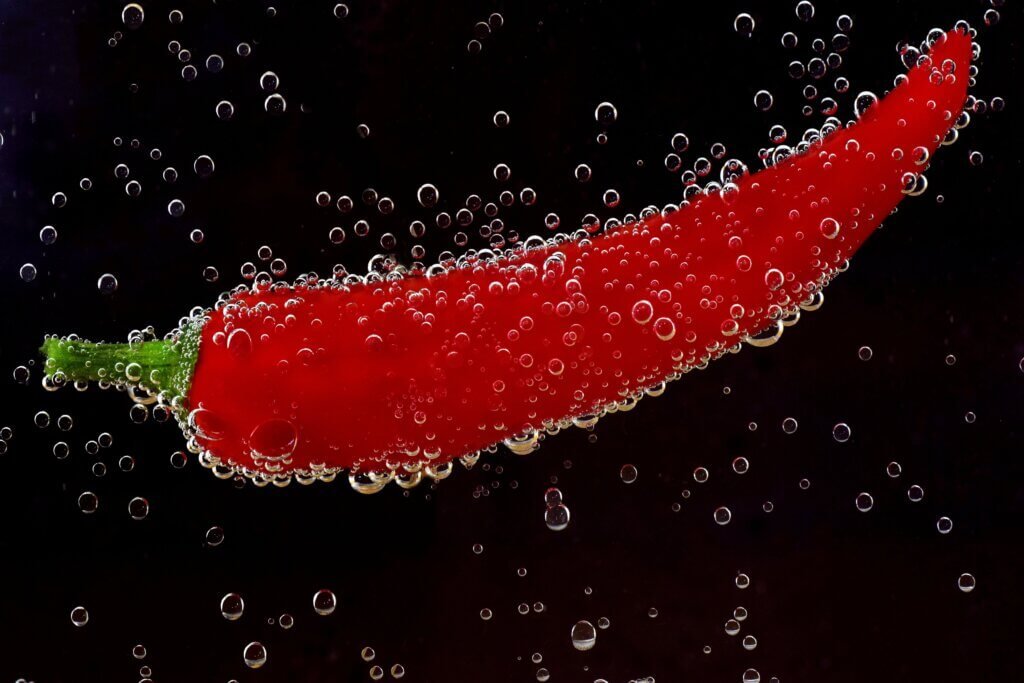
Serving and Pairing Suggestions
Garnishing the Chili
When it comes to serving the beef and bean chili, don’t forget the garnishments! Sprinkle some freshly chopped cilantro or parsley on top to add a pop of color and freshness. You can also add a dollop of sour cream or a sprinkle of shredded cheese for extra creaminess and richness. Sliced jalapeños or hot sauce can be added for those who like a bit of heat. Serve the chili hot, and let everyone garnish their bowls according to their preferences.
Choosing Toppings
In addition to the garnishments, there are various toppings you can offer alongside the chili. Sliced green onions or scallions add a mild, onion flavor, while diced tomatoes add a burst of freshness. Shredded cheese, such as cheddar or Monterey Jack, is always a crowd-pleaser. Tortilla strips or crushed tortilla chips add crunch and texture. Encourage your guests to get creative and choose their favorite toppings to personalize their chili bowls.
Pairing with Cornbread
The beef and bean chili pairs perfectly with cornbread. The sweet and slightly crumbly texture of the cornbread complements the rich and savory flavors of the chili. Serve a slice of warm cornbread alongside the bowl of chili, allowing your guests to enjoy the contrasting tastes and textures. The combination of chili and cornbread is a classic comfort food duo that is sure to satisfy everyone’s taste buds.
Side Dish Ideas
If you want to enhance your meal further, consider serving a few side dishes alongside the beef and bean chili. A simple green salad with a tangy vinaigrette can help balance out the richness of the chili. Steamed vegetables, such as broccoli or green beans, add a nutritious touch. For a heartier option, you could make a batch of buttery mashed potatoes or fluffy rice. These side dishes provide variety and ensure everyone finds something they enjoy.
Twists and Variations
Using Alternative Meats
While beef is the traditional choice for chili, you can experiment with alternative meats to create unique and flavorful variations. Try substituting ground turkey, chicken, or pork for the beef. These leaner meat options offer a different taste profile while still providing ample protein. You can even mix different meats for a more complex flavor. Don’t be afraid to get creative and customize your chili with the meats that you and your loved ones prefer.
Vegetarian Chili Option
For those who follow a vegetarian diet or simply want to incorporate more plant-based meals, a vegetarian chili option is a fantastic choice. Instead of using ground beef, you can bulk up your chili with a combination of different beans, such as black beans, kidney beans, and chickpeas. Include plenty of vegetables, like diced tomatoes, peppers, onions, and corn, to add flavor and texture. Vegetable broth or water can be used as the base instead of beef broth. This plant-based alternative is equally satisfying and nutritious.
Adding Spicy Heat
If you like your chili with a kick, there are several ways to add spicy heat to your beef and bean chili. Increase the amount of chili powder or add cayenne pepper for a fiery flavor. Fresh or dried jalapeños can be diced and added to the chili for an authentic Mexican-style kick. For an even more intense heat, try adding a few drops of hot sauce or a pinch of red pepper flakes. Just be sure to gauge your guests’ spice tolerance before going all in!
Experimenting with Herbs and Spices
While chili powder, cumin, and oregano are the classic spices used in chili, don’t be afraid to experiment with other herbs and spices to customize the flavor profile of your beef and bean chili. Smoked paprika can add a hint of deep smokiness, while ground coriander provides a citrusy and fragrant note. For a more aromatic chili, consider adding a pinch of cinnamon or a bay leaf. Play around with different combinations and find the blend that suits your taste preferences.
Adding Other Ingredients
The beauty of making beef and bean chili is that you can easily customize it by adding other ingredients that appeal to your palate. Corn kernels can provide a burst of sweetness and texture. Diced sweet potatoes or butternut squash can add a subtle sweetness and additional creaminess. For a tangy twist, add a splash of lime juice or incorporate a can of diced tomatoes with green chilies. The possibilities are endless, so feel free to experiment and add your own unique touch to the classic recipe.
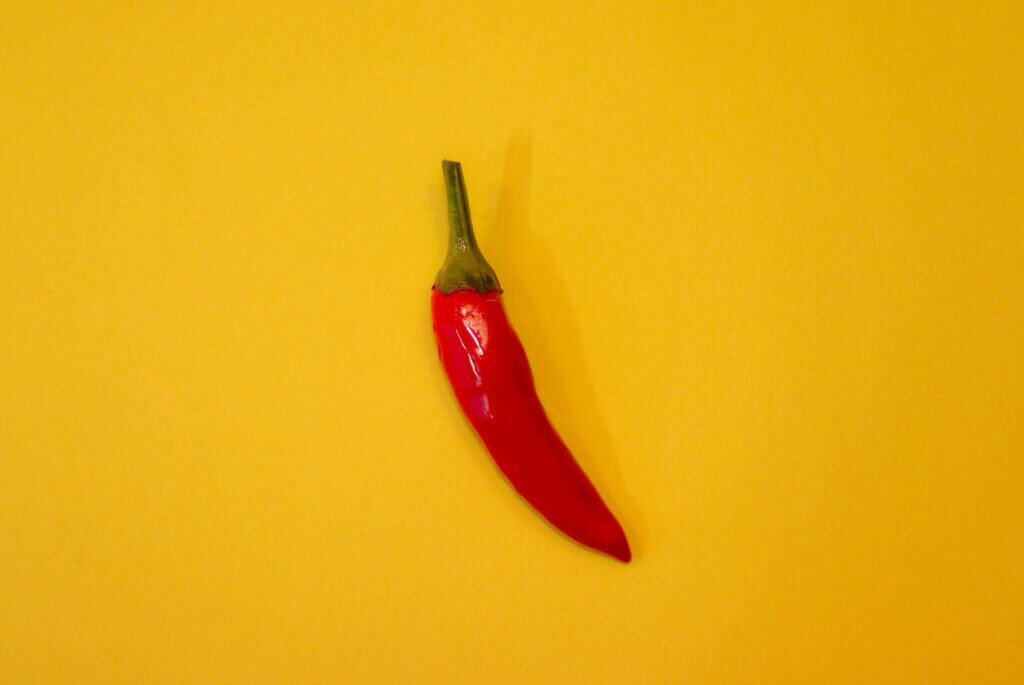
Tips and Tricks
Optimal Meat Selection
When it comes to choosing the meat for your beef and bean chili, opt for lean ground beef with a lower fat content. This will prevent the chili from becoming overly greasy and improve its overall texture. Look for ground beef labeled as 90% lean or higher for the best results. Additionally, if using alternative meats, ensure they are also low in fat to achieve a healthier and tastier chili.
Enhancing Flavor with Aromatics
Aromatics, such as onions and garlic, play a crucial role in elevating the flavor of your beef and bean chili. To enhance their taste and aroma, consider sautéing them for a few minutes before adding the meat. This step allows the aromatics to release their natural oils and intensify their flavors. It adds depth and complexity to your chili, making it irresistibly delicious.
Adjusting Heat Levels
Attaining the perfect level of spiciness is key to enjoying your chili. If you prefer a milder chili, use less chili powder and eliminate or reduce the amount of spicy ingredients, such as jalapeños or hot sauce. On the other hand, if you love spicy food, don’t hesitate to add more chili powder or other sources of heat. Taste your chili as you go and adjust the spices accordingly, ensuring that it satisfies your desired heat level.
Achieving Desired Consistency
The consistency of chili is a matter of personal preference. Some prefer a thick and hearty chili, while others prefer a thinner and soup-like texture. If you prefer a thicker chili, let it simmer uncovered for a longer time. The liquid will reduce, resulting in a thicker consistency. If you want a thinner chili, add a small amount of beef or vegetable broth until you achieve your desired consistency. Don’t be afraid to experiment and find the perfect balance for your taste.
Making Ahead and Freezing
Beef and bean chili is an ideal dish for making ahead of time and freezing for later use. Once the chili has cooled to room temperature, portion it into airtight containers or freezer bags. Label and date them before placing them in the freezer. When reheating the frozen chili, thaw it in the refrigerator overnight and then warm it gently on the stovetop. This method allows the flavors to meld and intensify, resulting in an even more delicious chili.
Troubleshooting
Thickening Thin Chili
If your chili turns out thinner than desired, there are a few tricks to thicken it up. First, you can create a slurry by combining equal parts cornstarch and cold water. Stir this into the chili and let it simmer for a few more minutes until it thickens. Alternatively, you can mash some of the beans against the side of the pot to release their starch, thickening the chili naturally. Lastly, allowing the chili to simmer uncovered for a longer time will also help evaporate excess liquid and thicken the consistency.
Thinning Thick Chili
If your chili ends up thicker than you prefer, there are a few methods to thin it out. The simplest way is to add more liquid, such as beef broth or water, and simmer the chili for a few more minutes. Gradually add small amounts of liquid until the chili reaches your desired consistency. Be careful not to dilute the flavors too much; adding small amounts of liquid at a time will help you maintain the taste and richness of the chili.
Balancing Flavors
In case your chili tastes too spicy, you can balance the heat by adding a small amount of sweetness. A teaspoon of sugar or a drizzle of honey can help neutralize the spicy flavors without altering the overall taste of the chili. If your chili lacks depth and richness, try adding a splash of Worcestershire sauce or a touch of soy sauce. These umami-rich ingredients will enhance the overall flavor profile of the chili. Taste and adjust the flavors as needed until you achieve a well-balanced and delicious chili.
Reducing Sodium Levels
If you are concerned about the sodium content in your beef and bean chili, there are a few ways to reduce it without sacrificing flavor. Opt for low-sodium or no-salt-added canned beans to control the amount of added salt. Use reduced-sodium beef broth or substitute it with homemade broth for a healthier alternative. Additionally, avoid adding extra salt during the cooking process and let the natural flavors from the spices and vegetables shine through. Balancing the other flavors can help mask any reduction in salt, ensuring your chili remains tasty and satisfying.
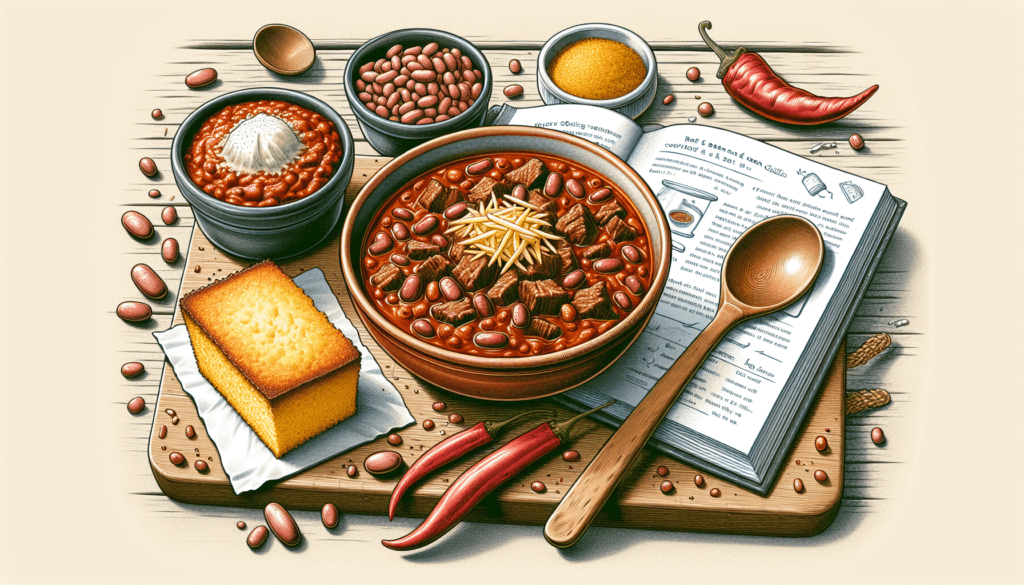
Healthier Alternatives
Substituting Leaner Meats
To make your beef and bean chili healthier, consider substituting leaner meats in place of traditional ground beef. Ground turkey or chicken is a fantastic alternative that offers a leaner protein source while still providing ample flavor. You can also try lean cuts of beef, such as sirloin or eye of round, and dice them into small cubes. These alternatives reduce the fat content of the chili while keeping it delicious and satisfying.
Using Low-Sodium Ingredients
Reducing sodium intake is important for maintaining a healthy lifestyle. When making beef and bean chili, opt for low-sodium ingredients whenever possible. Choose low-sodium canned beans and tomatoes to minimize the salt content. Use reduced-sodium broth or make your own with fresh ingredients. Additionally, be mindful of the amount of salt you add during the cooking process and taste as you go. By incorporating low-sodium ingredients, you can enjoy a healthier version of this classic comfort food without sacrificing flavor.
Incorporating More Vegetables
Adding more vegetables to your beef and bean chili is an excellent way to pack in extra nutrients and fiber. Consider adding diced carrots, celery, or zucchini to the simmering pot of chili. These vegetables not only enhance the nutritional value but also provide additional texture and flavors. The fiber from the vegetables will help keep you feeling full and satisfied, making your chili a well-rounded and nutritious meal.
Reducing Added Fats
To make your chili healthier, it’s essential to reduce the amount of added fats. Instead of browning the ground beef in oil, try using cooking spray or a non-stick pan to reduce the amount of added fat. If you prefer a richer flavor, use a small amount of olive oil or avocado oil, which are healthier alternatives to traditional cooking oils. Additionally, skim off any excess fat that rises to the surface during the cooking process to further reduce the fat content.
Choosing Whole Grain Cornbread
To make your cornbread a healthier option, consider using whole grain flour instead of refined flour. Whole grain flour retains more of the natural nutrients and fiber present in grains, making the cornbread more nutritious. You can also reduce the sugar content or use alternative sweeteners like honey or maple syrup for a more natural and healthier sweetness. These small changes will make your cornbread a wholesome accompaniment to the beef and bean chili.
Rustic Chili and Cornbread
Exploring Traditional Recipes
Rustic chili and cornbread evoke a sense of nostalgia and homey warmth. Exploring traditional recipes from various regions allows you to appreciate the diverse culinary heritage associated with these comforting dishes. From Texas-style chili with chunks of tender beef to Cincinnati-style chili served over spaghetti, each region has its unique take on this beloved dish. Similarly, cornbread recipes can vary in sweetness, texture, and even the addition of ingredients like corn kernels or cheese. Exploring these traditional recipes allows you to delve into the rich culinary history surrounding chili and cornbread.
Cooking Techniques
Rustic chili and cornbread are often associated with simple yet impactful cooking techniques. Slow simmering the chili allows the flavors to meld together, resulting in a deliciously rich and robust stew. Letting the cornbread bake until golden brown creates a slightly crispy crust while maintaining a tender and moist interior. These cooking techniques are passed down through generations and highlight the importance of patience and attention to detail in achieving the perfect rustic chili and cornbread.
Historical Significance
Rustic chili and cornbread have deep historical significance in America. Chili originated in the Southwest, where it was initially made by Spanish settlers and Native Americans using dried beef, peppers, and spices. As cattle drives expanded during the 19th century, chili became a staple dish among cowboys and trailblazers. Cornbread, on the other hand, has Native American roots and has been a staple in their cuisine for centuries. Cornbread’s versatility and ability to provide sustenance made it popular during times of scarcity and as a common side dish in many traditional meals.
Regional Variations
One of the fascinating aspects of rustic chili and cornbread is the variety of regional variations found across the United States. From the hearty and thick Texas-style chili with chunks of beef to the bean-centric chili of the Midwest, each region has its spin on this classic dish. Cornbread recipes differ as well, with the sweet and cake-like version found in the South contrasting with the less sweet and more crumbly varieties found in the North. Exploring these regional variations allows you to experience the diverse flavors and culinary traditions that make rustic chili and cornbread so beloved.
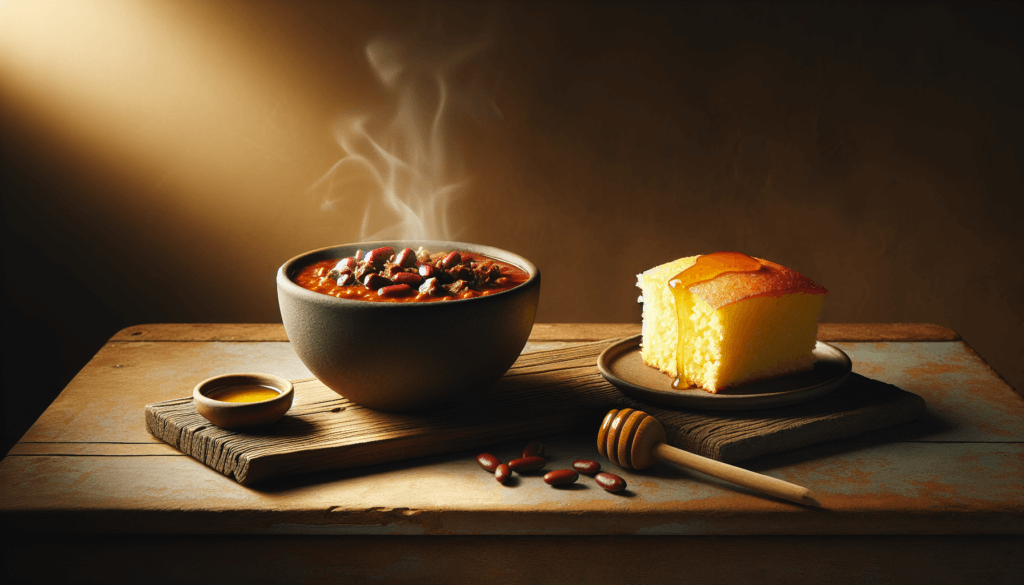
Chili and Cornbread Catering
Preparing for Large Groups
If you’re planning to serve beef and bean chili with cornbread for a large group, proper preparation is the key to success. Make a list of all the ingredients needed and calculate the quantities based on the number of people you will be serving. Consider using disposable containers or chafing dishes to keep the chili and cornbread warm during serving. It’s also helpful to have extra bowls, utensils, and napkins readily available. Being organized and prepared beforehand will ensure a smooth and enjoyable catering experience.
Scaling the Recipe
Scaling the beef and bean chili with cornbread recipe to accommodate a larger group is easier than it may seem. Start by determining the number of servings you need, and then multiply all the ingredients accordingly. Keep in mind that the cooking time might vary slightly depending on the size of the pot or baking dish, so check for doneness using the recommended cooking time as a guideline. As you scale the recipe, taste as you go to ensure the flavors are well balanced. Adjust the spices accordingly to accommodate the larger batch.
Serving Methods
When catering beef and bean chili with cornbread, you have several serving methods to consider. For a more casual event, setting up a self-serve chili bar allows guests to customize their own bowls of chili with an array of toppings and garnishes. Another option is to serve individual portions of chili in bowls, with a slice of cornbread on the side. This presentation is a more formal approach and ensures that each guest receives a consistent portion. Consider the type of event, the number of guests, and the overall atmosphere to determine the most suitable serving method.
Accommodating Dietary Restrictions
When catering beef and bean chili with cornbread, it’s important to accommodate any dietary restrictions or preferences of your guests. Consider offering a vegetarian or vegan chili option to cater to those who do not consume meat or animal products. Label any potential allergens, such as dairy or gluten, to inform your guests about the ingredients used. Offering gluten-free cornbread or whole grain options can also provide alternatives for guests with specific dietary needs. By taking into account these considerations, you ensure that everyone can enjoy your delicious chili and cornbread.
Conclusion
Delicious Homemade Comfort Food
Beef and bean chili with cornbread is the epitome of homemade comfort food. The deep flavors, rich textures, and heartwarming qualities of this classic combination make it an all-time favorite. Whether you’re enjoying it on a cozy night in, hosting a gathering with friends and family, or simply craving a hearty meal, beef and bean chili with cornbread is sure to satisfy your taste buds and warm your soul.
Adaptable Recipes for Any Occasion
The versatility of beef and bean chili with cornbread is what makes it such a versatile dish for any occasion. Whether you’re making it for a weeknight dinner, a game day gathering, or even a potluck, this classic combination never disappoints. With its numerous variations, you can adapt the recipes to suit your taste preferences, dietary needs, or the ingredients you have on hand. The adaptability of beef and bean chili with cornbread ensures that there’s a version to suit every palate and occasion.
Culinary Creativity at Its Finest
Making beef and bean chili with cornbread allows you to unleash your culinary creativity. From experimenting with different meats and vegetables to playing with spices and seasonings, you have the freedom to make it uniquely yours. You can add your own twists and variations, incorporate healthier alternatives, or even explore the rich historical and regional aspects of these beloved dishes. The act of preparing and serving beef and bean chili with cornbread allows you to express your love for cooking and share a delicious and comforting experience with others.

